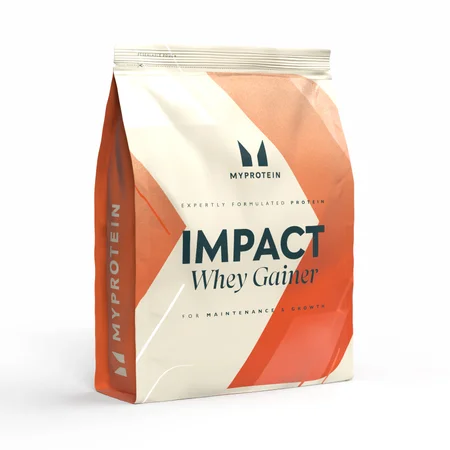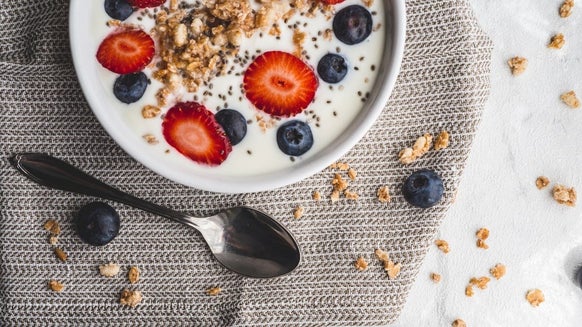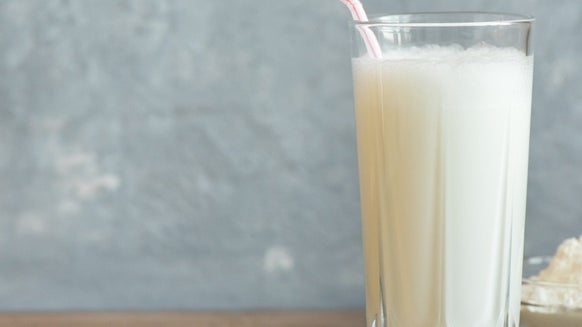How To Gain Mass, Not Fat

Top Gaining Tips
Why does this article apply to you? Because if you’re looking to gain mass muscle, a few dietary misconceptions may see you turning tubby instead of built. After all, generalised advice for getting bigger can come across as a guide to getting a bigger belly when the tips are limited to ‘eat lots and lots and keep on eating’.
There is a shred of truth in that, to be fair. You only need to Google the average pro-bodybuilder or NFL player’s diet to see that consuming serious calories is the gist of getting big. For anyone looking to lose weight, mass-gainers can appear like the lucky ones who get to eat whatever they want whenever they want. Anyone who’s new to this approach will quickly see that it’s not easy to eat so much more than you’re used to. What’s more, you’ll question how much of your bulk is fat, how much is muscle, and how much all of that food is really doing for your strength and physical ability (especially if the wrong kind of carb-loading has left you too lethargic to lift weights).

Essentially, if you focus on healthy lean muscle gains, in the long run you’ll see the goals that you’re after compared to troughing to get there quicker.
Now, don’t go thinking we’re contradicting ourselves here; what we’re trying to do is distinguish facts from the misconceptions of over eating. One of those facts is that a common reason for insignificant gains and even muscle loss is that you are not consuming enough calories (at least, from the right kinds of food).
Protein, the building blocks of your muscle, is of course of the up most importance, but calories are also essential in size. If your calories are your energy fuel, keep in mind that you’re using more than you think in your every day coming and going. Your brain and bodily functions use up your calories, and cardio exercise is the perfect way to burn them. If you’re trying to build, you need to understand getting bigger muscles comes low on the list of your body’s priorities for using that energy. This means you need to avoid a deficit.
While you want to avoid fat gains, building muscle means you want a surplus to work with. Excessive fat gains are also detrimental as they can slow down your muscle growth and accelerate your body’s fat storage.

Pro's advise that the answer is a gradual process, and one that means you are keeping track on your progress as opposed to shoveling food at random. This involves a calorie surplus of 5-10 percent. This should be spread out with the right foods that involve calories but not junk, avoiding empty refined calories, saturated and trans fats. Spreading the meals out is also key, so don’t try and play catch up with huge meals or an excessive day to make up for others where you fell short.
This 5-10 percent calorie surplus applies to a male with around 10 percent body fat, meaning you may want to cut your body fat before beginning if you’re over that amount. You can then expect to put on 0.5 to one pound per week.
The gradual approach takes into account healthy hormonal and insulin levels – both of which can be negatively inflicted by gorging on junk food to make your gains.
In terms of protein you should consume 1 gram of protein per pound of your body weight. For carbs, add 25 to 35 grams of carbs to your daily intake. If this is ineffective, or you can’t see a difference, repeat this and make sure that you are eating the right kinds of carbs, including whole grains and sweet potatoes.

An integral part in your gains may be supplements. Mass gain shakes will provide you with the numbers you want to see in terms of increasing proteins etc, and isolate whey will ensure you get the protein and energy into your system as quickly as possible following a workout. Supplements are a perfect way to keep track of what you’re adding to your diet on top of your meals, making it easy when you can look it up on a menu. For example BCAAs and creatine supplements are a cornerstone in many builders’ journeys.
Of course, the aforementioned outline of mass building applies to you if you have a weight lifting regimen in place, or at least the intentions for one when you begin to put on this weight we’ve been talking about. If you make these additions and increases to your dietary requirements without putting in the work at the gym, the excess will then result in the unwanted fat you’re trying to avoid. It is a matter of balance, but with the above gradual increase in calories combined with the gradual increase in volumes lifted, a lean muscle approach will eventually build to healthy gains.

Claire is a Registered Dietitian through the Academy of Nutrition and Dietetics and a board-certified Health and Wellness Coach through the International Consortium for Health and Wellness Coaching. She has a Bachelor of Science in Biology and a Master’s degree in Clinical Dietetics and Nutrition from the University of Pittsburgh.
Talking and writing about food and fitness is at the heart of Claire’s ethos as she loves to use her experience to help others meet their health and wellness goals.
Claire is also a certified indoor cycling instructor and loves the mental and physical boost she gets from regular runs and yoga classes. When she’s not keeping fit herself, she’s cheering on her hometown’s sports teams in Pittsburgh, or cooking for her family in the kitchen.
Find out more about Claire’s experience here.









